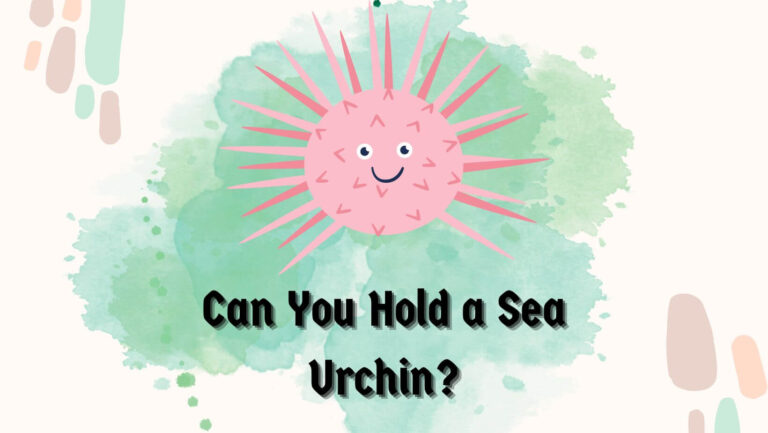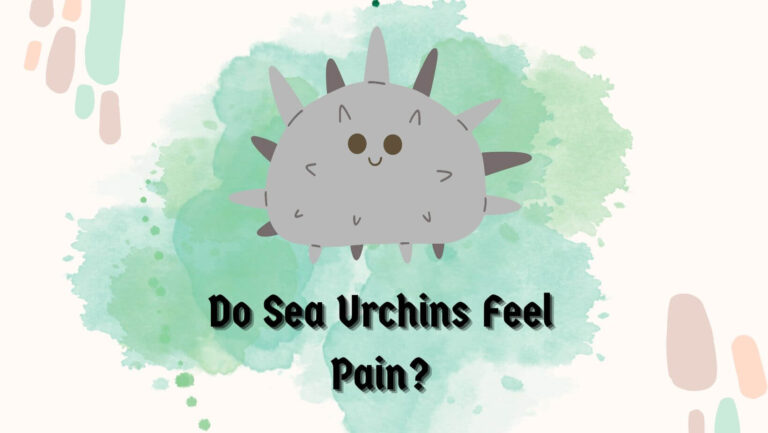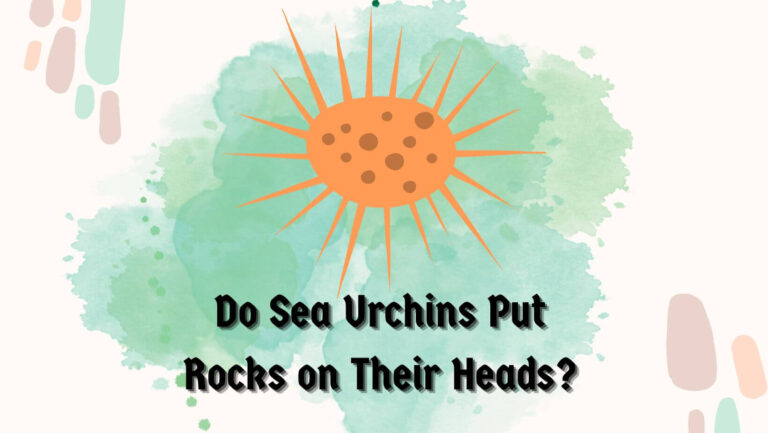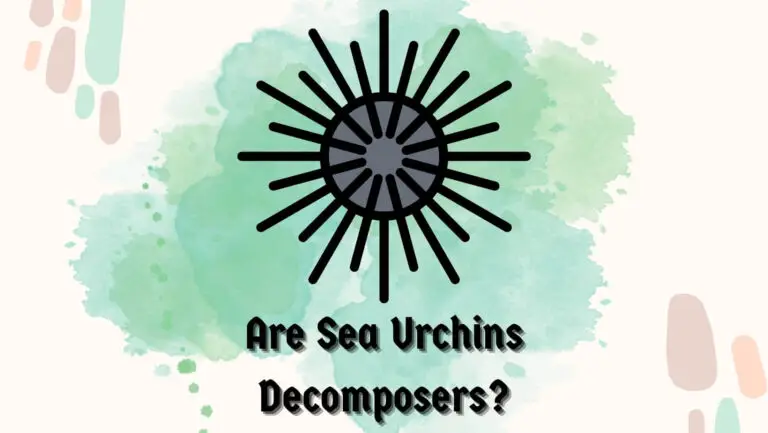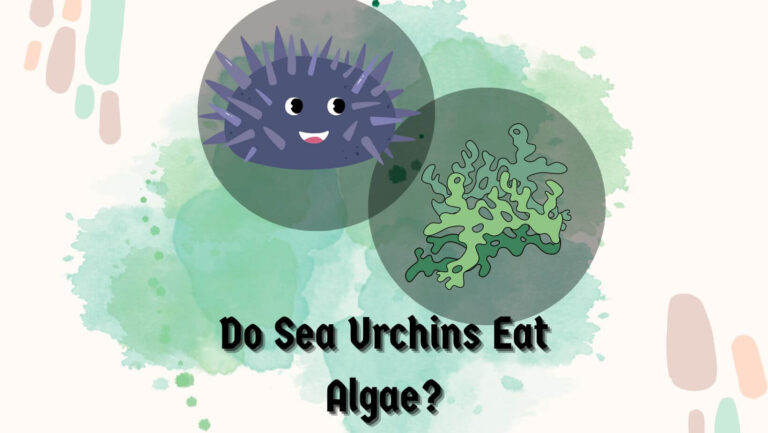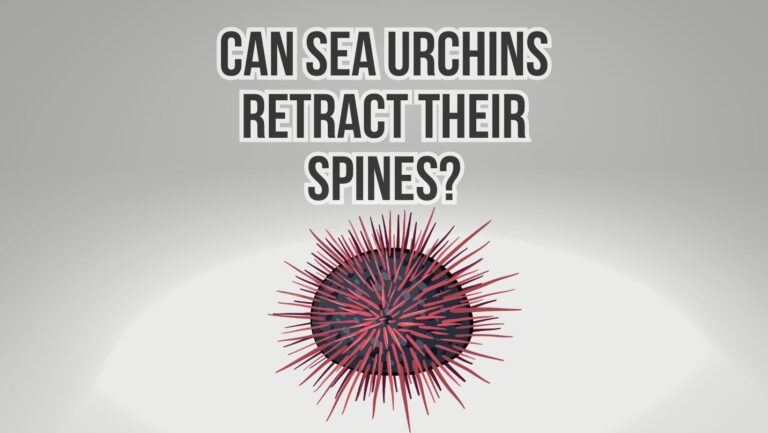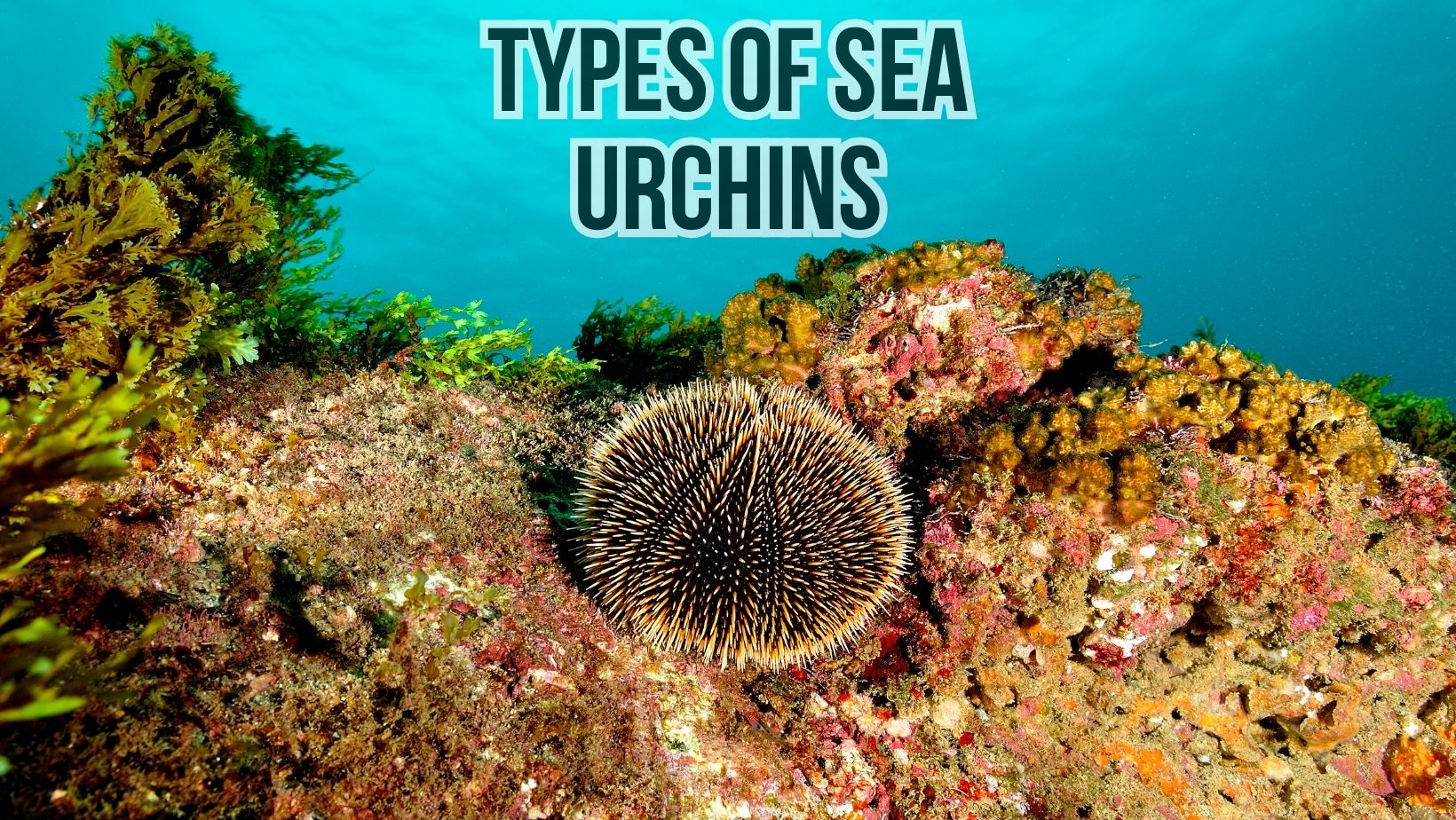
Sea urchins are spiny, globe-shaped creatures found in oceans worldwide. There are over 950 species of sea urchins, which vary in size, color, and shape. In this essay, we will discuss some of the different types of sea urchins, their characteristics, and their habitats.
The seven levels of classification for a sea urchins
- Kingdom: Animalia – Sea urchins belong to the animal kingdom, which includes all multicellular organisms that are eukaryotic and heterotrophic.
- Phylum: Echinodermata – Sea urchins are classified under the phylum Echinodermata, which consists of marine animals characterized by radial symmetry and a spiny exoskeleton.
- Class: Echinoidea – Sea urchins belong to the class Echinoidea, which includes all sea urchins and sand dollars. This class is part of the phylum Echinodermata.
- Order: The order is a level of classification that further classifies organisms within a class. For sea urchins, there are several orders, including:
- Clypeasteroida: Sand dollars.
- Echinoida: Regular sea urchins.
- Temnopleuroida: Irregular sea urchins.
- Family: The family is a taxonomic rank that groups related organisms below the order level. Sea urchins belong to various families, such as Strongylocentrotidae and Diadematidae, depending on the specific species.
- Genus: The genus is a rank that groups similar species together. For example, the genus Strongylocentrotus includes several species of sea urchins, such as Strongylocentrotus purpuratus and Strongylocentrotus droebachiensis.
- Species: The species is the most specific level of classification and refers to a particular type of organism. Each species has a unique scientific name. For instance, Strongylocentrotus purpuratus is the scientific name for the purple sea urchin.
It is important to note that the classification of sea urchins may be subject to updates and revisions as scientific knowledge advances and new information becomes available.
20+ Colored Varieties of Sea Urchins
- Purple Sea Urchins (Strongylocentrotus purpuratus)
- Green Sea Urchins (Strongylocentrotus droebachiensis)
- Red Sea Urchins (Mesocentrotus franciscanus)
- Collector Urchins (Tripneustes gratilla)
- Black Sea Urchins long Spined (Diadema antillarum)
- Common sea urchin (aracentrotus lividus)
- Large sea urchin (Echinus esculentus)
- Fire urchin (Astropyga radiata)
- Ericillo sea urchin (Echinocyamus pusillus)
- Heart-shaped sea urchin (Echinocardium cordatum)
- Pacific sand dollar (Dendraster excentricus)
- Five-hole sand dollar (Mellita quinquiesperforata)
- Six-hole urchin (Leodia sexiesperforata)
- Melon urchin (Echinus melo)
- Red pencil urchin (Heterocentrotus mammillatus)
- White sea urchin (Gracilechinus acutus)
- Snuff Box (Cidaris cidaris)
- Purple heart urchin (Spatangus purpureus)
- Red snuffbox (Stylocidaris affinis)
- Sea potato (Brissus unicolor)
- Purple sea urchin (Strongylocentrotus purpuratus)
- Gatherer urchin (Tripneustes gratilla)
- Variegated sea urchin (Lytechinus variegatus)
- Burrowing urchin (Echinometra mathaei)
- Kina (Evechinus chloroticus)
- Flower sand dollar (Encope emarginata)
- Sea cake (Arachnoides placenta)
- Red sea urchin (Asthenosoma marisrubri)
Purple Sea Urchins (Strongylocentrotus purpuratus):
This is the most common species of sea urchin found on the west coast of North America, ranging from Alaska to Baja California. They have a purple or reddish-brown color and can grow up to 8 cm in diameter. They inhabit rocky shores and kelp forests and feed on algae, kelp, and other plant material.
- Color: Purple or reddish-brown.
- Size: Can grow up to 8 cm in diameter.
- Habitat: Commonly found on the west coast of North America, from Alaska to Baja California.
- Diet: Feeds on algae, kelp, and other plant material.
- Significance: Plays a vital role in kelp forest ecosystems.
Green Sea Urchins (Strongylocentrotus droebachiensis):
These sea urchins are found in the North Atlantic, from Greenland to Massachusetts. They have a greenish color and can grow up to 10 cm in diameter. They inhabit rocky areas and feed on algae, kelp, and other plant material.
- Color: Greenish.
- Size: Can grow up to 10 cm in diameter.
- Habitat: Found in the North Atlantic, from Greenland to Massachusetts.
- Diet: Feeds on algae, kelp, and other plant material.
- Remark: Can be important in maintaining the balance of rocky coastal ecosystems.
Red Sea Urchins (Mesocentrotus franciscanus):
Red sea urchins are found along the Pacific coast of North America, from Alaska to Baja California. They have a reddish-brown color and can grow up to 20 cm in diameter. They live in rocky areas and feed on kelp and other plant material. Red sea urchins are commercially harvested for their roe, which is a delicacy in Japanese cuisine.
- Color: Reddish-brown.
- Size: Can grow up to 20 cm in diameter.
- Habitat: Inhabits the Pacific coast of North America, from Alaska to Baja California.
- Diet: Feeds primarily on kelp and other plant material.
- Remark: Commercially harvested for their roe, which is a prized delicacy in Japanese cuisine.
Collector Urchins (Tripneustes gratilla):
These sea urchins are found in tropical waters worldwide, including the Pacific and Indian Oceans. They have a reddish-brown color and can grow up to 15 cm in diameter. They live in rocky and coral reef areas and feed on algae and other plant material.
- Color: Reddish-brown.
- Size: Can grow up to 15 cm in diameter.
- Habitat: Found in tropical waters worldwide, including the Pacific and Indian Oceans.
- Diet: Feeds on algae and other plant material.
- Remark: Inhabits rocky and coral reef areas, serving as an herbivore.
Black Sea Urchins long Spined (Diadema antillarum):
These sea urchins are found in the Caribbean Sea and western Atlantic Ocean. They have long, black spines and can grow up to 20 cm in diameter. They inhabit coral reefs and rocky areas and feed on algae and other plant material.
- Color: Black.
- Size: Can grow up to 20 cm in diameter.
- Habitat: Found in the Caribbean Sea and western Atlantic Ocean.
- Diet: Feeds on algae and other plant material.
- Remark: Inhabits coral reefs and rocky areas, known for their long spines.
Common Sea Urchin (Arbacia lixula):
- Description: The common sea urchin, also known as purple sea urchin, has a spherical body covered in short spines. It ranges in color from reddish-brown to purple.
- Habitat: Found in the Mediterranean Sea and along the Atlantic coasts of Europe and Africa.
- Feeding: Herbivorous, it grazes on algae and plant material.
- Remark: The roe of the common sea urchin is consumed in some culinary traditions.
Large Sea Urchin (Echinus esculentus):
- Description: The large sea urchin has a robust spherical body with long, sharp spines. It typically has a reddish-brown or purple coloration.
- Habitat: Found in the Atlantic Ocean, particularly along the coasts of Europe and the British Isles.
- Feeding: Herbivorous, it primarily feeds on algae and kelp.
- Remark: Like the common sea urchin, it is also harvested for its roe in some regions.
Fire Urchin (Astropyga radiata):
- Description: The fire urchin has vibrant red or orange spines with darker bands. Its body is flattened, and the spines are longer than those of many other sea urchin species.
- Habitat: Found in the Indo-Pacific region, particularly in coral reefs.
- Feeding: Omnivorous, it feeds on algae, detritus, and small invertebrates.
- Remark: The fire urchin’s striking coloration makes it a sought-after species in the aquarium trade, but handling it requires caution due to its venomous spines.
Ericillo Sea Urchin (Echinocyamus pusillus):
- Description: The ericillo sea urchin has a small, flattened body with short spines. It typically has a reddish-brown or yellowish coloration.
- Habitat: Found in the eastern Atlantic Ocean and the Mediterranean Sea.
- Feeding: Omnivorous, it feeds on organic matter and small invertebrates.
- Remark: It is a burrowing species commonly encountered in intertidal zones and sandy or muddy habitats.
Heart-shaped Sea Urchin (Echinocardium cordatum):
- Description: The heart-shaped sea urchin has a flattened body with short spines and a heart-shaped appearance. It is typically sandy or yellowish-brown in color.
- Habitat: Found in the North Atlantic Ocean and the North Sea.
- Feeding: Deposit feeder, it burrows into sandy or muddy substrates, ingesting organic particles.
- Remark: The heart-shaped sea urchin is known for its unique appearance and burrowing behavior.
Pacific Sand Dollar (Dendraster excentricus):
- Description: The Pacific sand dollar has a flat, disc-shaped body with a distinctive pattern of radial furrows. It is typically light gray to purple in color.
- Habitat: Found along the Pacific coast of North America, from Alaska to Baja California.
- Feeding: Deposit feeder, it filters organic matter from the sediment.
- Remark: It is often collected and admired for its iconic appearance as a beachcombing treasure.
Five-hole Sand Dollar (Mellita quinquiesperforata):
- Description: The five-hole sand dollar has a round, flattened body with five distinct keyhole-shaped perforations. It is typically tan to gray in color.
- Habitat: Found along the Atlantic coast of the Americas, from North Carolina to Brazil.
- Feeding: Deposit feeder, it extracts organic matter from the sediment using tube feet and specialized spines.
- Remark: The five perforations or holes allow for respiration and the extension of tube feet.
Six-hole Urchin (Leodia sexiesperforata):
- Description: The six-hole urchin has a disc-shaped body with six keyhole-shaped perforations. It is typically gray to brown in color.
- Habitat: Found along the Atlantic coast of the Americas, from North Carolina to Brazil.
- Feeding: Deposit feeder, it sifts through the sediment for organic matter using tube feet and spines.
- Remark: The six perforations aid in respiration and the extension of tube feet.
Melon Urchin (Echinus melo):
- Description: The melon urchin has a round body covered in short spines, and it can vary in color from green to reddish-brown or purple.
- Habitat: Found in the Mediterranean Sea and the eastern Atlantic Ocean.
- Feeding: Omnivorous, it feeds on algae, detritus, and small invertebrates.
- Remark: It is named for its melon-like shape.
Red Pencil Urchin (Heterocentrotus mammillatus):
- Description: The red pencil urchin has long, slender, and slightly curved spines. It can range in color from red to reddish-brown or purple.
- Habitat: Found in the Indo-Pacific region, particularly in coral reefs.
- Feeding: Herbivorous, it primarily feeds on algae and plant material.
- Remark: Its distinctive red color and slender spines make it visually striking.
White Sea Urchin (Gracilechinus acutus):
- Description: The white sea urchin has a spherical body covered in short, white spines. It is typically pale yellowish-white or light brown.
- Habitat: Found in the Mediterranean Sea and the eastern Atlantic Ocean.
- Feeding: Herbivorous, it grazes on algae and plant material.
- Remark: It is known for its delicate appearance and pale coloration.
Snuff Box (Cidaris cidaris):
- Description: The snuff box, also known as the compass sea urchin, has a globular body covered in large, blunt spines arranged in a distinctive pattern resembling a compass rose.
- Habitat: Found in the Atlantic Ocean, from the British Isles to the Mediterranean Sea.
- Feeding: Omnivorous, it feeds on algae, small invertebrates, and organic matter.
- Remark: The pattern of spines on its body is its most distinguishing feature.
Purple Heart Urchin (Spatangus purpureus):
- Description: The purple heart urchin has an oval or heart-shaped body covered in short spines. It is typically purple or reddish-brown.
- Habitat: Found in the Atlantic Ocean, from the British Isles to the Mediterranean Sea.
- Feeding: Deposit feeder, it burrows in sandy or muddy sediments, ingesting organic particles.
- Remark: It is named for its distinctive shape and purple coloration.
Red Snuffbox (Stylocidaris affinis):
- Description: The red snuffbox has a small, flattened body with short spines. It ranges in color from red to orange or brown.
- Habitat: Found in the Indo-Pacific region, particularly in coral reefs.
- Feeding: Omnivorous, it feeds on algae, detritus, and small invertebrates.
- Remark: It is a cryptic species often hidden among rocks and coral rubble.
Sea Potato (Brissus unicolor):
- Description: The sea potato has a round, flattened body covered in spines. It is typically brown or grayish-brown.
- Habitat: Found in the Atlantic Ocean and the Mediterranean Sea.
- Feeding: Deposit feeder, it burrows in sandy or muddy sediments, extracting organic matter.
- Remark: It is named for its potato-like shape and rough texture.
Purple Sea Urchin (Strongylocentrotus purpuratus):
- Description: The purple sea urchin has a spherical body covered in short, spiky purple or reddish-brown spines.
- Habitat: Found along the Pacific coast of North America, from Alaska to Baja California.
- Feeding: Herbivorous, it feeds on algae and kelp.
- Remark: It is a common species in kelp forest ecosystems and is commercially harvested for its roe, which is a delicacy in some cuisines.
Gatherer Urchin (Tripneustes gratilla):
- Description: The gatherer sea urchin has a round body covered in short, reddish-brown spines.
- Habitat: Found in tropical waters worldwide, including the Pacific and Indian Oceans.
- Feeding: Omnivorous, it feeds on algae and small invertebrates.
- Remark: It plays a role as an herbivore in rocky and coral reef areas.
Variegated Sea Urchin (Lytechinus variegatus):
- Description: The variegated sea urchin has a spherical body covered in short spines with a variegated pattern of purple, green, and white.
- Habitat: Found along the Atlantic coast of the Americas, from the United States to Brazil.
- Feeding: Omnivorous, it feeds on algae, detritus, and small invertebrates.
- Remark: It is commonly encountered in seagrass beds and rocky areas.
Burrowing Urchin (Echinometra mathaei):
- Description: The burrowing sea urchin has a small, spherical body covered in short spines. It is typically black or dark brown.
- Habitat: Found in the Indo-Pacific region, particularly in coral reefs.
- Feeding: Omnivorous, it feeds on algae, detritus, and small invertebrates.
- Remark: It is known for its burrowing behavior and can sometimes be found hiding in crevices or under rocks.
Kina (Evechinus chloroticus):
- Description: The kina has a round body covered in long, sharp spines. It is typically greenish-brown or purple.
- Habitat: Found in the waters around New Zealand, including the rocky shores and shallow coastal areas.
- Feeding: Herbivorous, it feeds on algae and kelp.
- Remark: It is an important species in the marine ecosystems of New Zealand.
Flower Sand Dollar (Encope emarginata):
- Description: The flower sand dollar has a flat, disc-shaped body with a distinct flower-like pattern on the upper surface. It is typically beige or pale brown.
- Habitat: Found along the Atlantic coast of the Americas, from the United States to Brazil.
- Feeding: Deposit feeder, it filters organic matter from the sediment using tube feet.
- Remark: It is known for its delicate and intricate floral pattern.
Sea Cake (Arachnoides placenta):
- Description: The sea cake, also known as the sand dollar, has a round, flattened body covered in fine spines. It is typically pale brown or white.
- Habitat: Found in the Indo-Pacific region, particularly in sandy or muddy substrates.
- Feeding: Deposit feeder, it extracts organic matter from the sediment.
- Remark: It is often encountered as a distinctive and flattened disc on sandy or muddy shores.
Red Sea Urchin (Asthenosoma marisrubri):
- Description: The red sea urchin has a round body covered in long, slender, red or orange spines.
- Habitat: Found in the Red Sea and the western Indian Ocean.
- Feeding: Herbivorous, it feeds on algae and plant material.
- Remark: It is known for its vibrant coloration and can often be found in coral reef environments.
Comparison Table:
| Purple Sea Urchins | Purple/Red-Brown | Up to 8 cm | West coast of North America | Algae, kelp, plant material |
| Green Sea Urchins | Greenish | Up to 10 cm | North Atlantic | Algae, kelp, plant material |
| Red Sea Urchins | Reddish-Brown | Up to 20 cm | Pacific coast of North America | Kelp, plant material |
| Collector Urchins | Reddish-Brown | Up to 15 cm | Tropical waters worldwide | Algae, plant material |
| Long-Spined Sea Urchins | Black | Up to 20 cm | Caribbean Sea, Western Atlantic | Algae, plant material |
| Sea Urchin/Sand Dollar | Description | Habitat | Feeding |
|---|---|---|---|
| Purple Sea Urchin (Strongylocentrotus purpuratus) | Spherical body, spiky purple or reddish-brown spines | Pacific coast of North America | Herbivorous, feeds on algae and kelp |
| Green Sea Urchin (Strongylocentrotus droebachiensis) | Spherical body, spiky green spines | North Atlantic, North Pacific | Herbivorous, feeds on algae and kelp |
| Red Sea Urchin (Mesocentrotus franciscanus) | Spherical body, long red spines | Pacific coast of North America | Herbivorous, feeds on algae and kelp |
| Collector Urchin (Tripneustes gratilla) | Round body, reddish-brown spines | Tropical waters worldwide | Omnivorous, feeds on algae and small invertebrates |
| Long-Spined Sea Urchin (Diadema antillarum) | Spherical body, long black spines | Tropical and subtropical regions | Herbivorous, feeds on algae and plant material |
| Common Sea Urchin (Arbacia lixula) | Spherical body, reddish-brown to purple coloration | Mediterranean Sea, Atlantic coasts of Europe and Africa | Herbivorous, feeds on algae and plant material |
| Large Sea Urchin (Echinus esculentus) | Robust spherical body, long spines | Atlantic Ocean, Europe, British Isles | Herbivorous, feeds on algae and kelp |
| Fire Urchin (Astropyga radiata) | Flattened body, vibrant red or orange spines | Indo-Pacific region, coral reefs | Omnivorous, feeds on algae, detritus, and small invertebrates |
| Ericillo Sea Urchin (Echinocyamus pusillus) | Small flattened body, short spines, reddish-brown or yellowish coloration | Eastern Atlantic Ocean, Mediterranean Sea | Omnivorous, feeds on organic matter and small invertebrates |
| Heart-shaped Sea Urchin (Echinocardium cordatum) | Flattened body, short spines, sandy or yellowish-brown coloration | North Atlantic Ocean, North Sea | Deposit feeder, ingests organic particles from sediment |
| Pacific Sand Dollar (Dendraster excentricus) | Flat, disc-shaped body, radial furrows | Pacific coast of North America | Deposit feeder, filters organic matter from sediment |
| Five-hole Sand Dollar (Mellita quinquiesperforata) | Round, flattened body, five keyhole-shaped perforations | Atlantic coast of the Americas | Deposit feeder, extracts organic matter from sediment |
| Six-hole Urchin (Leodia sexiesperforata) | Disc-shaped body, six keyhole-shaped perforations | Atlantic coast of the Americas | Deposit feeder, sifts organic matter from sediment |
| Melon Urchin (Echinus melo) | Round body, short spines, green to reddish-brown or purple coloration | Mediterranean Sea, eastern Atlantic Ocean | Omnivorous, feeds on algae and small invertebrates |
| Red Pencil Urchin (Heterocentrotus mammillatus) | Slender, curved spines, red to reddish-brown or purple coloration | Indo-Pacific region, coral reefs | Herbivorous, feeds on algae and plant material |
| White Sea Urchin (Gracilechinus acutus) | Spherical body, short white spines, pale yellowish-white or light brown coloration | Mediterranean Sea, eastern Atlantic Ocean | Herbivorous, feeds on algae and plant material |
| Snuff Box (Cidaris cidaris) | Globular body, large, blunt spines arranged in compass rose pattern | Atlantic Ocean, British Isles to Mediterranean Sea | Omnivorous, feeds on algae, small invertebrates, and organic matter |
| Purple Heart Urchin (Spatangus purpureus) | Oval or heart-shaped body, short spines, purple or reddish-brown coloration | Atlantic Ocean, British Isles to Mediterranean Sea | Deposit feeder, ingests organic particles from sediment |
| Red Snuffbox (Stylocidaris affinis) | Small, flattened body, short spines, red to orange or brown coloration | Indo-Pacific region, coral reefs | Omnivorous, feeds on algae, detritus, and small invertebrates |
| Sea Potato (Brissus unicolor) | Round, flattened body, spines, brown or grayish-brown coloration | Atlantic Ocean, Mediterranean Sea | Deposit feeder, extracts organic matter from sediment |
| Purple Sea Urchin (Strongylocentrotus purpuratus) | Spherical body, spiky purple or reddish-brown spines | Pacific coast of North America | Herbivorous, feeds on algae and kelp |
| Gatherer Urchin (Tripneustes gratilla) | Round body, reddish-brown spines | Tropical waters worldwide | Omnivorous, feeds on algae and small invertebrates |
| Variegated Sea Urchin (Lytechinus variegatus) | Spherical body, variegated pattern of purple, green, and white spines | Atlantic coast of the Americas | Omnivorous, feeds on algae, detritus, and small invertebrates |
| Burrowing Urchin (Echinometra mathaei) | Small, spherical body, short spines, black or dark brown coloration | Indo-Pacific region, coral reefs | Omnivorous, feeds on algae, detritus, and small invertebrates |
| Kina (Evechinus chloroticus) | Round body, long, sharp spines, greenish-brown or purple coloration | Waters around New Zealand | Herbivorous, feeds on algae and kelp |
| Flower Sand Dollar (Encope emarginata) | Flat, disc-shaped body, floral pattern | Atlantic coast of the Americas | Deposit feeder, filters organic matter from sediment |
| Sea Cake (Arachnoides placenta) | Round, flattened body, spines, pale brown or white coloration | Indo-Pacific region, sandy or muddy substrates | Deposit feeder, extracts organic matter from sediment |
| Red Sea Urchin (Asthenosoma marisrubri) | Spherical body, long, slender, red or orange spines | Red Sea, western Indian Ocean | Herbivorous, feeds on algae and plant material |
Types Of Sea Urchins Found In Various Regions
While I can provide some general information on the types of sea urchins found in various regions, it is important to note that specific species can vary within these locations. Additionally, there may be variations in local names or subspecies. Here are some commonly encountered sea urchins in the requested areas:
- Types of Sea Urchins in Hawaii: Collector Urchin (Tripneustes gratilla): A common sea urchin found in the shallow waters around Hawaii. It has reddish-brown spines and feeds on algae and plant material.
- Types of Sea Urchins in Florida: Long-Spined Sea Urchin (Diadema antillarum): This sea urchin has long black spines and is found in the Caribbean, including the southern coast of Florida.
- Types of Sea Urchin Shells:Sand Dollars (Clypeasteroida): Sand dollars are flattened sea urchins with distinctive round shells. They can be found in various coastal areas worldwide.
- Types of Sea Urchins in Australia:Purple Sea Urchin (Heliocidaris erythrogramma): A common sea urchin found in Australian waters. It has purple or red spines and feeds on algae and kelp.
- Types of Sea Urchins in the Great Barrier Reef:Red Sea Urchin (Heliocidaris tuberculata): This sea urchin is found in the Great Barrier Reef and has red or brown spines. It primarily feeds on algae and kelp.
- Types of Sea Urchins in the Caribbean:Long-Spined Sea Urchin (Diadema antillarum): This sea urchin with long black spines is commonly found in the Caribbean Sea, including the Caribbean islands.
- Types of Sea Urchins in Coral Reefs:Pencil Sea Urchin (Eucidaris tribuloides): A species often found in coral reef ecosystems. It has long, thin spines and feeds on algae and detritus.
- Types of Sea Urchins in Maui:Red Slate Pencil Urchin (Heterocentrotus mammillatus): A sea urchin with red or reddish-brown spines commonly found in the waters around Maui, Hawaii.
- Types of Sea Urchins in the Philippines:Variegated Sea Urchin (Mespilia globulus): A common sea urchin species found in the Philippines. It has bright blue or green spines with white bands.
- Types of Sea Urchins in Puerto Rico:Slate Pencil Urchin (Eucidaris tribuloides): This sea urchin with long black spines can be found in the waters around Puerto Rico and the Caribbean.
It is important to consult local guides, experts, or resources specific to these regions for a more comprehensive and accurate understanding of the sea urchin species found there.
What Is Is Reason Of Color In Sea Urchin
The color in sea urchins is primarily influenced by the pigments present in their tissues. The pigmentation can vary among species and may serve different purposes. Here are some reasons for the coloration in sea urchins:
- Camouflage: Sea urchins often exhibit coloration that helps them blend into their surroundings, providing camouflage and protection from potential predators. The coloration can match the environment they inhabit, such as the rocky or coral reef substrate, and help them remain inconspicuous.
- Species Identification: Different species of sea urchins may display distinct colors or patterns that aid in species recognition and identification. These unique colorations can be useful for individuals of the same species to identify and interact with one another.
- Warning Signals: Some sea urchins have bright or contrasting colors that serve as warning signals to potential predators, indicating that they possess defensive mechanisms, such as sharp spines or venomous appendages. These warning colors communicate to predators that the sea urchins are not suitable prey.
- Environmental Factors: The coloration in sea urchins can also be influenced by environmental factors such as water temperature, light intensity, and availability of food sources. These factors can contribute to variations in pigmentation among individuals within a species.
- UV Protection: Sea urchins, like many other marine organisms, are exposed to ultraviolet (UV) radiation from sunlight. Some species have evolved pigmentation patterns that provide protection against UV radiation, reducing potential damage to their tissues.
It is important to note that coloration in sea urchins can also change or fade depending on various factors, including stress, diet, or reproductive state. Additionally, some sea urchins have the ability to alter their coloration temporarily through modifications in their skin pigments or spines, allowing them to adjust their appearance in response to changing environmental conditions.
While these are general reasons for coloration in sea urchins, specific species may exhibit unique color patterns and have additional factors contributing to their coloration.
Conclusion
In summary, there are many different species of sea urchins with varying colors, sizes, and spines. They can be found in oceans all over the world and inhabit a range of environments, from rocky shores to coral reefs. Sea urchins play an important role in marine ecosystems as herbivores and prey for other animals. Some species are even commercially harvested for food.

